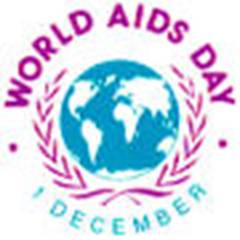
By Ms. Gersh
Spring 2005


Every year, millions of
innocent people are dying of AIDS. One
such person was Ryan White, a young boy who had hemophilia. He contracted the HIV virus. Due to his disease, Ryan experienced
prejudice among his classmates and community.
However, Ryan did not allow negativity to get in his way. He was an inspiration for thousands of people
to overcome their own fears about AIDS.
You have recently returned
from another great summer vacation, now ready to enter your junior year of high
school. You enter your ESL class, where you
meet up with your old friends, while seeing many new faces in your class. Excited to meet the new students, your
teacher asks each student to introduce themselves. When it is a new student’s turn to introduce herself, you are shocked and nervous to hear that this
student has AIDS. You ask yourself, “Why
is she in this school?” and “What if I get AIDS from her?” Like many other students in the class, you
are worried that her disease might soon become your disease.

After learning about your new
classmate, you are curious about what AIDS really is. To help better understand this disease, your
teacher has asked you to become a reporter on AIDS. As a reporter, you will research different
websites to help to answer questions about the history of AIDS, how people get
AIDS and how AIDS can be prevented.
By doing this research, you
will be able to help educate others in your community about AIDS and how to
prevent themselves from contracting this deadly disease.
Your research team will be
producing a report on AIDS, where you will discuss the history of AIDS, how one
contracts AIDS, and AIDS awareness and prevention, with a special focus on teenagers. Using the TIPS Public Policy Analyst, you
will also be able to develop convincing arguments for the use of specific
policies. Each group member’s report
will be a minimum of two type-written pages. You will use the Internet
resources to help research information for your report.

You will complete the
following as an AIDS researcher:
1. You will work in groups of four to complete
all tasks and worksheets.
2. You will work in groups to create and hand
out survey questionnaires on AIDS awareness to 5 different people (per
researcher) and gather the information from the completed surveys.
3. You will create graphs from information
gathered from the surveys.
4. You will write a 2 page report on your
research of AIDS.(Each group member will write a
report.)
Your report will include:
a. the history
of AIDS
b. how a person gets AIDS
c. information on different countries with people
living with AIDS
d. how AIDS can be prevented through awareness and
education
e. possible solutions to stop the spread of this
deadly disease
5. You will submit a journal, writing about your
daily experiences while completing the WebQuest
project.
Use the 6-step Public Policy format to help with your
research. In your groups, complete the
handouts to collect information for each step.
|
Age |
#
of Cumulative AIDS Cases |
|
Under 13: |
9,300 |
|
Ages 13 to 14: |
839 |
|
Ages 15 to 24: |
35,460 |
|
Ages 25 to 34: |
301,278 |
|
Ages 35 to 44: |
347,860 |
|
Ages 45 to 54: |
138,386 |
|
Ages 55 to 64: |
40,584 |
|
Ages 65 or older: |
12,868 |
- What is the problem?
Define the social problem-Worksheet
#1
Gather evidence - Worksheet #2
4. What is the existing
policy?
Evaluate a policy – Worksheet #4
5.What policies can you create to correct the problem?
Develop solutions – Worksheet #5
6.What is the best policy to correct the problem?
Select best solution – Worksheet
#6

http://aidshistory.nih.gov/first_encounters/index.html
The first encounter of AIDS
http://cdc.gov/hiv/pubs/faqs.htm#symptom
Important facts about AIDS
http://whatudo.org/whatudo?page=learn-01-11-26
Number of people living with AIDS
http://library.thinkquest.org/J003087F/interest.htm
Information on AIDS and the prevention of AIDS
http://whatudo.org/whatudo?page=learn-01-11-06
Is there a cure for AIDS?
http://pbs.org/newshour/extra/features/july-dec02/aids.htm
The effects of AIDS throughout the world
http://library.thinkquest.org/J003087F/photo.htm
AIDS: How it kills people
http://msnbc.msn.com/id/5411881/site/newsweek
Living with AIDS in
http://nces.ed.gov/nceskids/graphing/
Create a graph from survey results
http://hostos.cuny.edu/homepages/lesnick/aids/page16.htm
AIDS Questionnaire
http://hostos.cuny.edu/homepages/lesnick/aids/page17.htm
Reduce the Risk of getting AIDS
Your work will be
graded according to the following rubric:
|
|
4 |
3 |
2 |
1 |
|
REPORT |
Accurate
information. Shows an
excellent grasp of the issue. Successfully presents
multiple strategies and/or resources available. |
Accurate,
specific information. Shows a strong
grasp of the issue. Discusses more
than one successful strategy and/or useful resources |
General Information. Uses one
specific strategy and/or resource. Has limited
understanding of issue. |
Inaccurate Information. |
|
|
No errors of
grammar/punctuation. |
Few minor
errors of grammar/punctuation. |
Has
errors of grammar/punctuation that do not affect comprehension. |
Serious errors that
affect comprehension. |
|
FORMAT |
PPA Format
followed exactly. |
PPA Format
followed generally. |
PPA Format is
followed inconsistently. |
Little evidence
of PPA Format. |
|
GRAPH |
Information
clearly used from surveys. Successfully created
a chart from survey information gathered. |
Some
information used from surveys. Some directions
followed to complete chart. |
Little
information used from survey. Directions not
followed to complete chart. |
Little evidence
of survey information gathered. |
|
JOURNAL |
Completes all
journal entries. Gives detailed
entries on daily project experiences. |
Missing one
journal entry. Gives
information in entries about daily project experiences. |
Missing two to
three journal entries. Lacks information
about daily project experiences. |
Missing three
or more journal entries. Gives no
information about daily project experiences. |
English Language Arts
 1. Students will read, write, listen, and speak for
social interaction.
1. Students will read, write, listen, and speak for
social interaction.
2. Students will use oral and written language for
effective social communication with a wide variety of people. As readers and
listeners, they will use the social communications of others to enrich their
understanding of people and their views.
Social Studies
1.Students
will use a variety of intellectual skills to demonstrate their understanding of
major ideas, eras, themes, developments, and turning points in world history
and examine the broad sweep of history from a variety of perspectives.
From
this WebQuest, you should have learned the history of the AIDS virus and how a
person gets this deadly disease. In addition, you should have learned the
importance of AIDS prevention, and how a person can avoid contracting
AIDS. With the knowledge you now have about AIDS, go out and educate your
family, friends and community in order to help protect people from getting such
a deadly disease.







